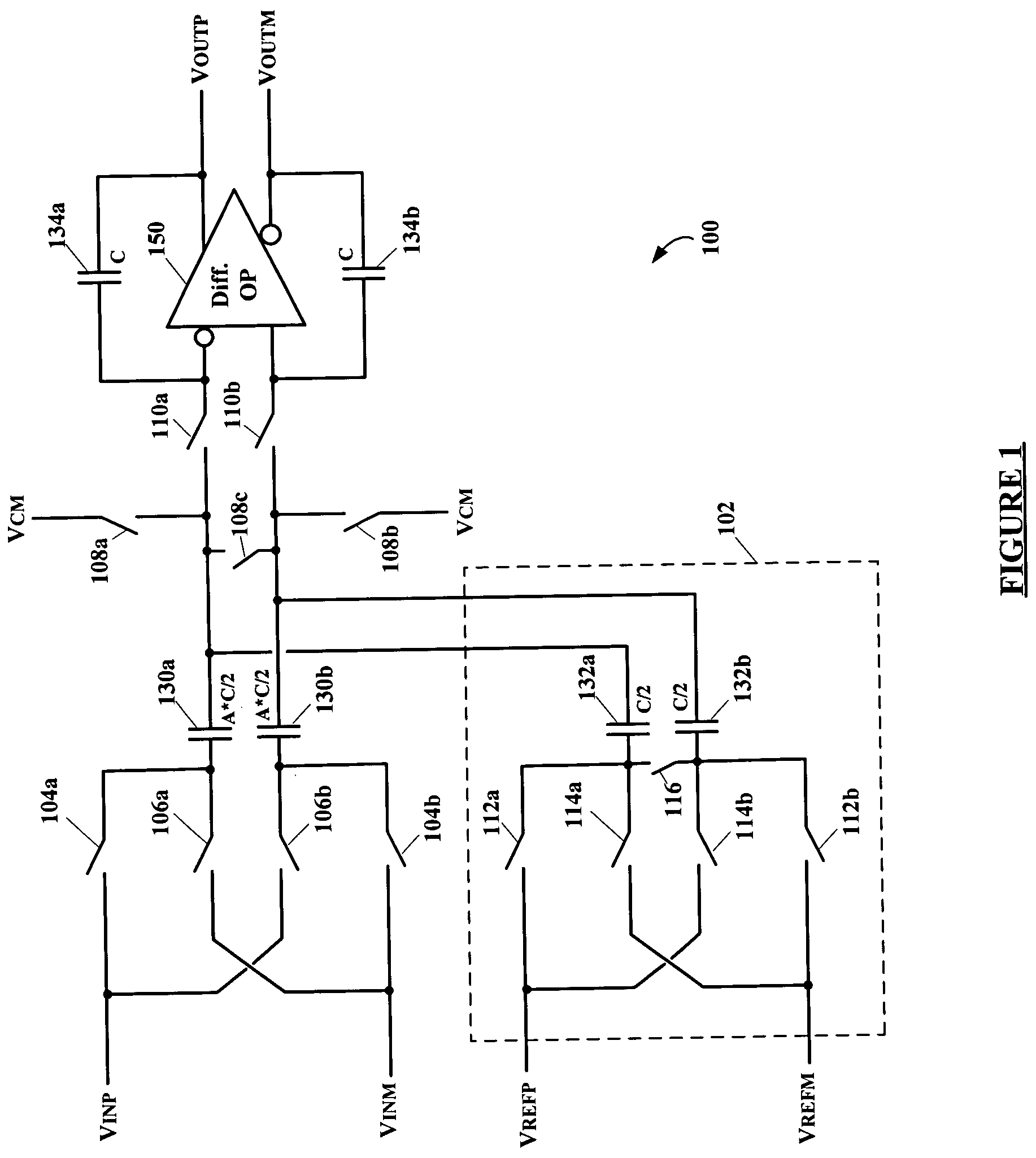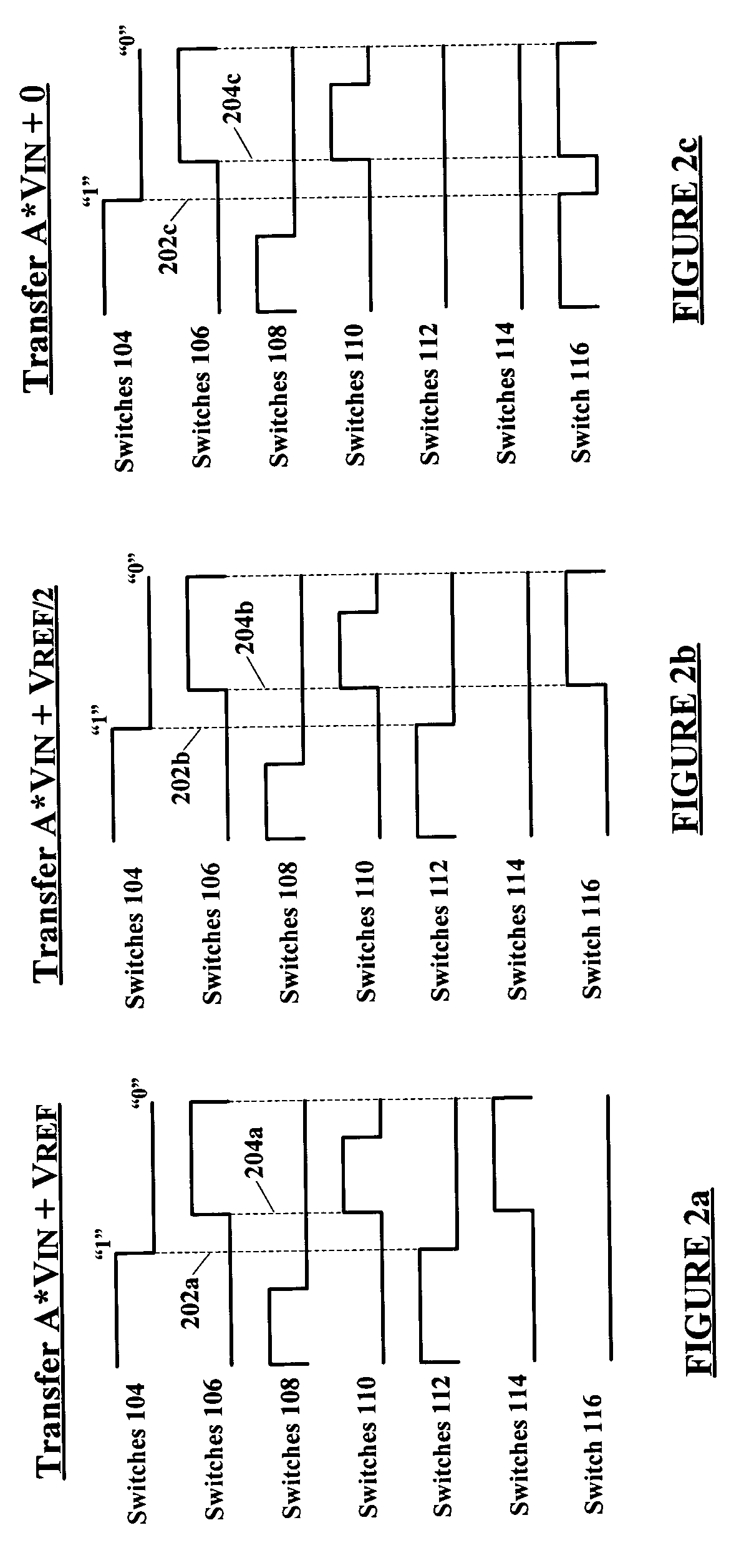Five-level feed-back digital-to-analog converter for a switched capacitor sigma-delta analog-to-digital converter
a digital-to-analog converter and switched capacitor technology, applied in the field of analog-to-digital converters, can solve the problems of inability to be more accurate than the digital-to-analog converter, the cost of expensive trimming or complicated dynamic element matching techniques, etc., to achieve low power consumption, improve signal to quantization noise ratio, and improve performance
- Summary
- Abstract
- Description
- Claims
- Application Information
AI Technical Summary
Benefits of technology
Problems solved by technology
Method used
Image
Examples
Embodiment Construction
[0018]The present invention utilizes an improved switching sequence that boosts the number of levels from two to five of a feed-back digital-to-analog converter (DAC) in a switched capacitor sigma-delta converter. Use of a five level feed-back DAC in a sigma-delta converter is a new, novel and non-obvious application.
[0019]Referring now to the drawings, the details of specific embodiments of the present invention are schematically illustrated. Like elements in the drawings will be represented by like numbers, and similar elements will be represented by like numbers with a different lower case letter suffix.
[0020]Referring to FIG. 1, depicted is a schematic circuit diagram of capacitor switching arrays and a differential amplifier for a five level feed-back digital-to-analog converter (DAC), according to specific exemplary embodiments of the invention. The five-level feed-back DAC, generally represented by the numeral 100, comprises a switching sequence that generates five equally sp...
PUM
 Login to View More
Login to View More Abstract
Description
Claims
Application Information
 Login to View More
Login to View More - R&D
- Intellectual Property
- Life Sciences
- Materials
- Tech Scout
- Unparalleled Data Quality
- Higher Quality Content
- 60% Fewer Hallucinations
Browse by: Latest US Patents, China's latest patents, Technical Efficacy Thesaurus, Application Domain, Technology Topic, Popular Technical Reports.
© 2025 PatSnap. All rights reserved.Legal|Privacy policy|Modern Slavery Act Transparency Statement|Sitemap|About US| Contact US: help@patsnap.com



